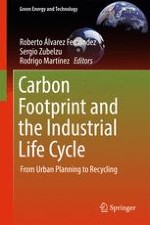2017 | OriginalPaper | Buchkapitel
9. Do Municipalities Have the Right Tools to Become Zero Carbon Emissions Cities? ACCENT, a Pan-European Decision-Support Tool to Take Refurbishment Decisions at City Scale Based on Buildings Energy Performance
verfasst von : Carolina Mateo-Cecilia, Vera Valero-Escribano, Miriam Navarro-Escudero
Erschienen in: Carbon Footprint and the Industrial Life Cycle
Aktivieren Sie unsere intelligente Suche, um passende Fachinhalte oder Patente zu finden.
Wählen Sie Textabschnitte aus um mit Künstlicher Intelligenz passenden Patente zu finden. powered by
Markieren Sie Textabschnitte, um KI-gestützt weitere passende Inhalte zu finden. powered by
